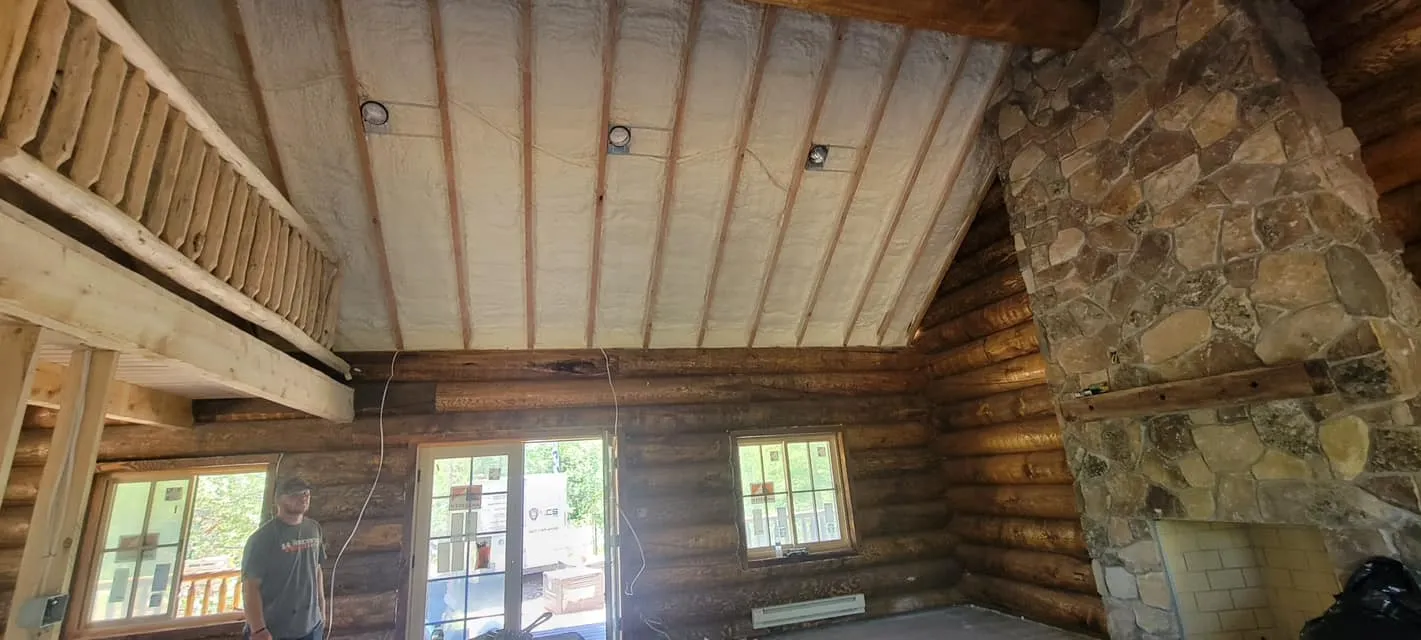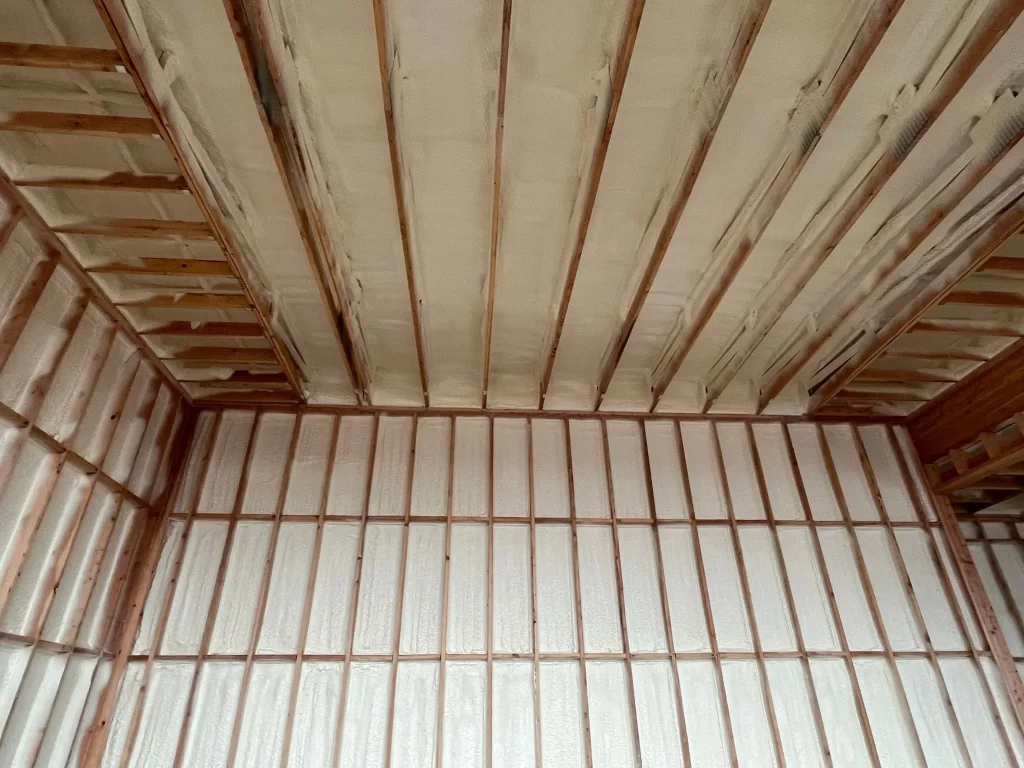
For projects in Shelley, Idaho, choosing the right under-slab insulation is fundamental to a building’s long-term performance and energy efficiency. Closed-cell spray foam is the superior choice for this application because it provides a combination of high compressive strength, exceptional thermal resistance, and a seamless monolithic barrier against moisture and air. Unlike rigid foam boards, which have seams that can leak or fail, spray foam creates a continuous layer that fully adheres to the substrate, eliminating gaps and preventing water vapor from migrating into the concrete slab. This is especially important in the Snake River Plain, where cold ground temperatures and seasonal moisture can compromise a building’s foundation and interior environment.
The ground in Shelley and the surrounding areas gets cold, and that cold can easily transfer into a building through an uninsulated concrete slab. This heat loss not only leads to higher energy bills but can also create uncomfortable living and working spaces. Effective under-slab insulation is necessary to create a thermal break between the building and the earth.
Idaho’s climate presents specific challenges, including deep frost lines and significant temperature swings. An insulated slab helps maintain a consistent indoor temperature and reduces the risk of condensation, which can lead to mold growth and damage to flooring materials. Furthermore, proper insulation helps prevent frost heave, a condition where freezing soil can lift and crack a concrete slab. According to the U.S. Department of Energy insulating the foundation can reduce heating costs by 10% to 20%. For a heated slab with radiant flooring, insulation is not just recommended, it’s essential for the system to operate efficiently.
Closed-cell spray polyurethane foam (ccSPF) offers a unique set of properties that make it particularly well-suited for the demanding under-slab environment.
Bonus Tip: Ensure that all plumbing and electrical conduits are in their final positions before the foam is applied. Because spray foam adheres to everything it touches, moving these elements afterward is difficult and can compromise the integrity of the insulation barrier.
Comparing Insulation Options for Under-Slab Applications
While rigid foam boards are a common choice for under-slab insulation, they have limitations when compared to spray foam. The table below outlines the key differences.
| Feature | Closed-Cell Spray Foam | Extruded Polystyrene (XPS) | Expanded Polystyrene (EPS) |
|---|---|---|---|
| R-Value per Inch | R-6 to R-7 | R-5 | R-3.6 to R-4.2 |
| Compressive Strength | 25-60 psi (Variable) | 15-100 psi (Variable) | 10-60 psi (Variable) |
| Vapor Permeability | Very Low (<1 perm) | Low | Moderate to High |
| Seam/Gap Sealing | Monolithic (No Seams) | Taped Seams Required | Taped Seams Required |
| Conformity to Substrate | Excellent | Limited (Gaps Possible) | Limited (Gaps Possible) |
The main takeaway from this comparison is the seamless nature of spray foam. Rigid boards, no matter how carefully installed and taped, leave seams that are potential points for air and moisture intrusion. Spray foam eliminates this vulnerability entirely.

Choosing the right insulation involves looking at your project’s specific needs and long-term goals.
Bonus Tip: When calculating the return on investment, factor in the combined cost of materials and labor for both insulation and a separate vapor barrier when comparing spray foam to rigid foam options.
Closed-cell spray foam offers a comprehensive solution for under-slab insulation in Shelley, ID. Its ability to deliver high thermal resistance, structural strength, and an integrated moisture barrier in a single application is unmatched by other materials. By creating a continuous, seamless layer of protection, it ensures a durable, comfortable, and energy-efficient foundation for any building. Before starting your next project, carefully consider the site conditions, your long-term energy goals, and the overall performance you expect from your building envelope.
To determine the best insulation strategy for your specific project, it’s helpful to discuss the details with an experienced professional. For a detailed consultation or to learn more about material specifications, you can contact High Country Solutions. Reach out via email at [email protected] or by phone at (307) 248-9063 to get answers tailored to your needs.
The compressive strength is selected based on the project’s load requirements. A common choice is a 2.0 lb density foam, which provides a compressive strength of around 25 psi. This is more than sufficient for standard residential and light commercial slabs. Higher-density foams are available for applications requiring greater load-bearing capacity.
While closed-cell spray foam is an effective air barrier, it is not officially rated as a standalone radon mitigation system. A report from the International Code Council specifies that while some foams resist gas movement, a dedicated radon mitigation system should still be installed in areas with high radon levels. However, the seamless barrier created by spray foam can significantly reduce radon infiltration compared to other insulation methods.
On a per-board-foot basis, spray foam installation is typically more expensive than buying rigid foam panels off the shelf. But the final project cost can be more competitive when you account for labor savings, the elimination of a separate vapor barrier, and the superior long-term performance and energy savings.
Yes, its closed-cell structure makes it highly resistant to water absorption. It acts as a barrier against bulk water and water vapor, which is why it is so effective at preventing moisture from moving from the ground into the concrete.